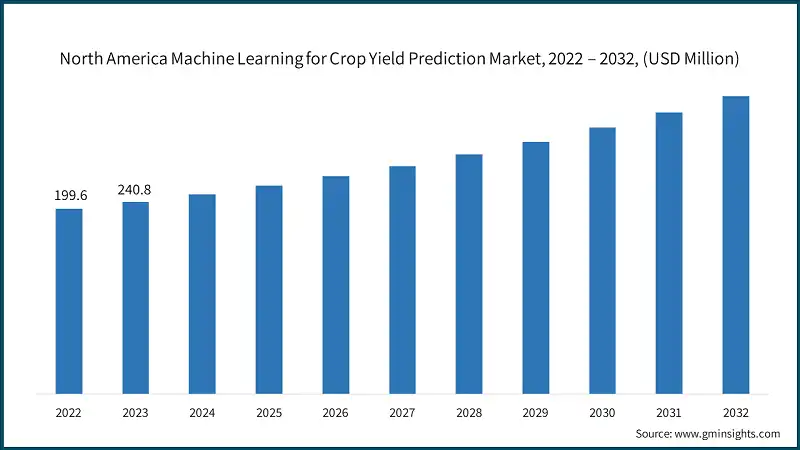Home > Agriculture > Agri Machinery & Tech > Agri Equipment > Machine Learning for Crop Yield Prediction Market
Machine Learning for Crop Yield Prediction Market Analysis
- Report ID: GMI10736
- Published Date: Aug 2024
- Report Format: PDF
Machine Learning for Crop Yield Prediction Market Analysis
Based on component, the market is divided into software and services. In 2023, the software segment held approximately USD 413 million. These solutions are becoming increasingly crucial, due to their seamless integration with Internet of Things (IoT) devices and big data platforms. For instance, in November 2023, the Department of Agriculture and Farmers Welfare in collaboration with Wadhwani Institute for AI developed Krishi 24/7, the first AI-powered solution for automated agricultural news monitoring and analysis, has received support from Google.org. This platform addresses the need for an efficient mechanism to identify and manage agricultural news articles, aiding timely decision-making. These integrations enable real-time data collection and analysis, significantly enhancing the accuracy of yield predictions. The growing emphasis on precision agriculture is driving the demand for sophisticated software capable of analyzing complex datasets and providing actionable insights. This trend is driving software developers to develop more advanced and user-friendly solutions, thus creating lucrative opportunities for further market growth.

Based on the deployment model, the machine learning for crop yield prediction market is categorized into cloud-based and on-premises. The cloud-based segment is expected to hold over USD 3.2 billion by 2032. These platforms provide scalable resources, allowing users to adjust computing power and storage according to their needs. This flexibility is essential for managing large datasets and complex models in crop yield prediction. Moreover, cloud-based solutions eliminate the need for substantial upfront investments in hardware and infrastructure. Additionally, users can pay for the resources they use on a subscription or pay-as-you-go basis, making it a more economical option for many organizations Further, it offers easy access to ML tools and datasets from anywhere, facilitating collaboration among researchers, farmers, and Agritech companies. This accessibility streamlines workflows and enhances the sharing of insights and findings. Moreover, collaboration enables stakeholders to utilize their collective expertise and data, driving innovation and improving decision-making in the market.

In 2023, North America dominated the machine learning for crop yield prediction market with around 41% of the market share. The region has a high-end repository of agricultural data, sourced from diverse channels such as satellite imagery, IoT sensors, and meteorological stations. This data availability plays a significant role in enhancing ML models, thereby enhancing the precision of yield forecasts. Additionally, both public and private companies from the U.S. have invested in AI and ML technology. These investments, spanning government grants and venture capital, are propelling the advancement of innovative technologies in agriculture across the region. Such financial capital catalyzes R&D activities and facilitates the implementation of cutting-edge solutions.
Moreover, governments across the Asia-Pacific region are actively promoting agricultural innovation through funding, subsidies, and policies designed to enhance productivity and sustainability. These efforts include significant investments in machine learning (ML) and artificial intelligence (AI) technologies. As a result, these initiatives are accelerating the adoption of advanced technologies in agriculture, promoting the development of more efficient and resilient farming practices. Furthermore, by leveraging ML and AI, the region is addressing its unique agricultural challenges, improving crop yields, and ensuring long-term food security and environmental sustainability.
The European Union (EU) has enacted policies and funding programs to modernize its agricultural sector. Initiatallowssuch as the Common Agricultural Policy (CAP) and Horizon Europe allow channeling of funds into cutting-edge technologies, such as machine learning (ML) for predicting crop yields. Through these investments, the EU seeks to boost agricultural productivity, bolster sustainability, and tackle various farming challenges. As a result, these efforts aim to foster innovation and empower the agricultural sector's resilience for the future.

